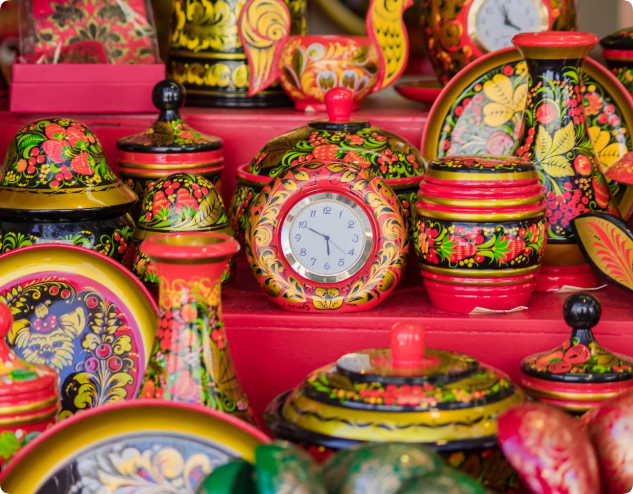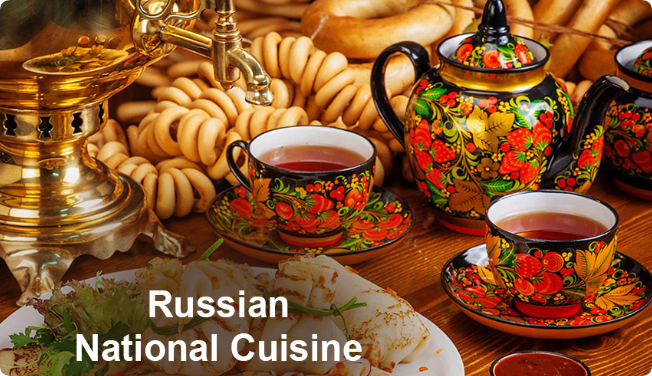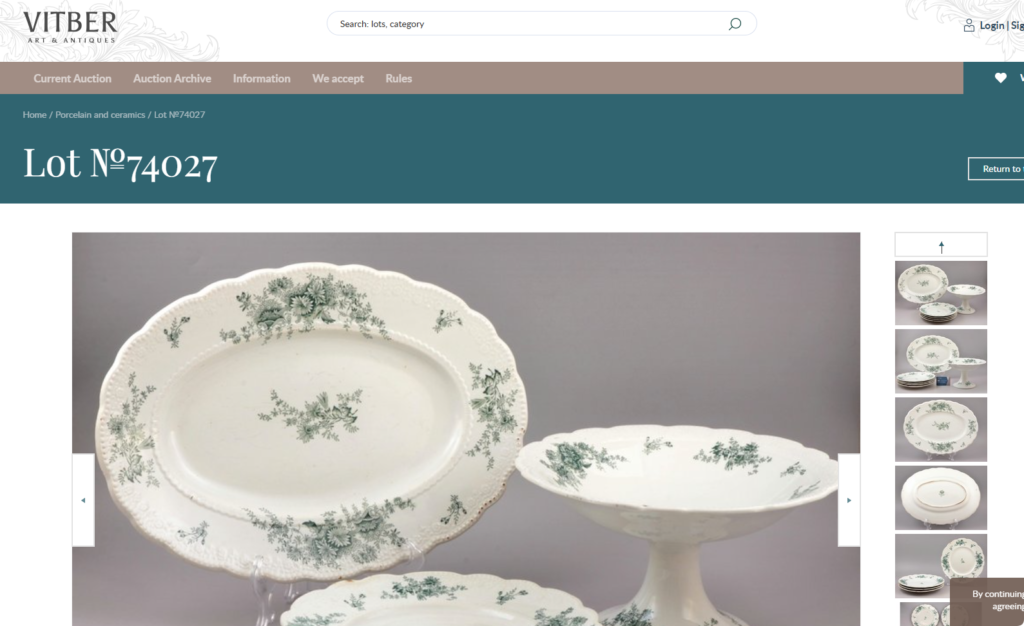Russian ceramic art has a long history, and for centuries, ceramic tableware has played a significant role in Russian culture. Traditional Russian ceramic designs are greatly influenced by regional differences, with each area having its own distinctive style. For example, Khokhloma, a famous decorative style from the Volga River region, is characterized by vibrant red, gold, and black colors, commonly used on ceramic tableware, decorative items, and furniture. Khokhloma design is not only an aesthetic expression but also reflects the deep respect Russians have for nature and tradition.

Additionally, Russian tableware designs emphasize practicality, especially in harsh climates, where ceramics need to be durable and resistant to cracks due to extreme temperature changes. Traditional Russian tableware is often thick, ensuring durability in everyday use. The thick glaze on Russian ceramics not only enhances their visual appeal but also protects the pottery from the impact of temperature fluctuations, which is particularly important in cold climates like Russia.
Cultural Preferences and Modern Trends
Although traditional Russian tableware designs are still favored by many families, modern designs are increasingly influencing the Russian market due to globalization and social progress. Younger generations tend to prefer minimalist, modern styles, emphasizing a combination of functionality and aesthetics. Modern designs often feature simple, fluid lines, soft colors, and geometric patterns.
However, traditional ceramics remain important during Russian holidays and special occasions. During New Year’s, Christmas, and other significant events, many families still use heirloom traditional tableware. This emotional and cultural connection helps maintain the strength of traditional designs in the Russian market. Therefore, manufacturers need to balance modern and traditional needs when designing ceramic tableware to attract a diverse range of consumers.
Regional Differences in Tableware Preferences in Russia
Due to Russia’s vast territory, cultural differences are apparent across the country. Consumers from different regions have distinct preferences for ceramic tableware, particularly in terms of design, functionality, and material selection.
- Moscow and St. Petersburg: As major cities, consumers here tend to favor modern, minimalist ceramic designs. Whether in home goods stores or restaurants, contemporary geometric designs are more popular. With the rise of the middle class, more Russians are inclined to buy international brands, preferring ceramics that align with global design trends.
- Siberia and the Far East: Consumers in these areas prioritize the practicality and durability of ceramic tableware. Due to the cold climate, thick and sturdy ceramics are highly favored. The designs from these regions tend to be more rugged, with vibrant glazes and patterns reflecting local cultural traditions.
- Volga Region: Known for producing Khokhloma ceramics, the intricate hand-painted patterns are still beloved. These distinctive design elements continue to hold significant value during holidays. The Khokhloma style represents not just tableware decor but also history and culture.
The Influence of Russian Culinary Culture on Tableware Choices
Russian cuisine is characterized by rich, hearty meals, with dishes such as stews, soups, and roasted meats being staples. This requires tableware that is not only beautiful but also highly functional. Russian tableware is often large, designed to accommodate the generous servings typical in Russian meals, particularly for stews and soups. Moreover, given the cold climate, many families prefer thick ceramics, which are better suited to withstand extreme temperatures.

Additionally, traditional Russian family meals are often large gatherings, necessitating tableware that can serve multiple people. The sturdy nature of ceramic tableware ensures it can withstand frequent use without breaking, making it the preferred choice for daily use in Russian households.
Modern Development and Brands

With Russia’s modernization, ceramic tableware designs have undergone notable changes. More designers are blending traditional Russian elements with modern global design trends, creating tableware that combines contemporary aesthetics with cultural heritage. For example, the brand Lomonosov Porcelain has focused on merging traditional Russian porcelain craftsmanship with modern design principles, offering collections that are both aesthetically contemporary and culturally significant.
Additionally, the Russian brand Vitber has innovated by introducing new ceramic tableware designs that combine tradition and modernity, appealing to both local and international consumers. The success of these brands is not only due to their exquisite craftsmanship and high-quality materials but also because they meet the dual demand of modern consumers for both design and functionality.
Comparison: Russian vs. Western Ceramics
| Feature | Russian Ceramic Tableware | Western Ceramic Tableware |
|---|---|---|
| Design Style | Traditional with ethnic elements, rich colors | Minimalistic, modern, often single-tone |
| Decoration Patterns | Natural motifs (floral, animals, etc.) | Modern geometric patterns, abstract art |
| Materials | High-quality clay, traditional craftsmanship | Ceramics with modern composite materials |
| Functionality | Thick, durable for extreme climates | Lightweight, adaptable to temperature changes |
Conclusion
Russian ceramic tableware is not just a tool for daily dining; it carries rich history, culture, and artistic value. From traditional blue-and-white porcelain to modern designs, Russian ceramics display their unique charm in the global market. For global homeware buyers, Russian ceramic tableware presents a promising market, as its intricate craftsmanship and deep cultural roots make it an attractive choice internationally.

